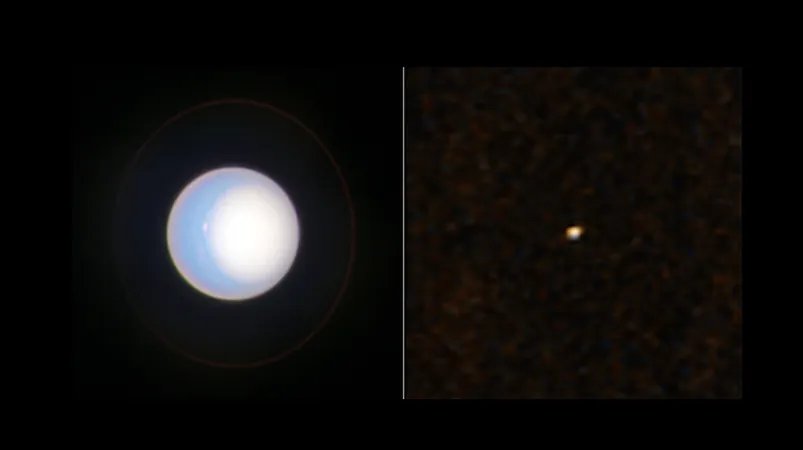
Groundbreaking Insights on Exoplanets from Unique Uranus Observations
2024-10-10
Author: Michael
NASA's Hubble Space Telescope and the New Horizons Collaboration
NASA's Hubble Space Telescope and the New Horizons spacecraft have recently collaborated to observe Uranus from two distinct vantage points, providing a valuable opportunity for scientists to enhance their understanding of gas giant planets and their exoplanet counterparts.
Uranus as a Stand-In for Exoplanets
By utilizing Uranus as a stand-in for exoplanets—planets orbiting stars outside our solar system—researchers compared Hubble's detailed imagery with the more distant observations made by New Horizons. This pioneering approach enables scientists to anticipate challenges and methodologies when imaging distant celestial bodies in the quest to locate potentially habitable exoplanets.
Unexpected Findings on Uranus's Dimming
Lead researcher Samantha Hasler from the Massachusetts Institute of Technology (MIT) noted an intriguing finding: "While we expected Uranus to appear differently in each filter of the observations, we discovered that Uranus was actually dimmer than expected in the New Horizons data taken from a different viewpoint." This unexpected dimming calls into question previous assumptions about how these distant worlds reflect light.
A Unique Perspective from New Horizons
New Horizons, positioned over six billion miles from Uranus during its observations, provided a unique perspective of the planet during twilight, a view unattainable from Earth. This unprecedented observation allows for a detailed analysis of the light reflected off the planet at various phases, shedding light on exoplanet characteristics that have remained elusive until now.
Hubble's Detailed Imagery
Hubble operated from a much closer distance of 1.7 billion miles, capturing breathtaking and detailed images of Uranus’s atmospheric features, including storms and cloud patterns. These discrepancies in illumination provide crucial data that can influence how astronomers interpret findings from other telescopes, such as the James Webb Space Telescope.
Implications for Exoplanet Studies
This dual observational approach not only deepens our understanding of Uranus, but raises exciting questions about the atmospheres of exoplanets. The knowledge gained from analyzing Uranus's atmospheric dynamics may help researchers understand whether similar phenomena exist among other gas giants located light-years away.
Future Telescopes and Research
Moreover, the public can anticipate even more revelations in the near future, as NASA is actively planning two groundbreaking telescopes: the Nancy Grace Roman Space Telescope, expected to launch by 2027, will employ advanced techniques to detect gas giant exoplanets directly; meanwhile, the Habitable Worlds Observatory aims to search for signs of life on Earth-like planets orbiting distant stars.
Significance of the New Horizons Mission
The unique Uranus observations underline the importance of missions like New Horizons, which have revolutionized our knowledge of celestial bodies in our solar system since its launch in 2006. The spacecraft made history with its 2015 Pluto flyby and continues its vital explorations in the Kuiper Belt, providing humanity with an unmatched perspective on distant cosmic phenomena.
Presentation at AAS Meeting
These remarkable findings from Uranus will be presented at the 56th annual meeting of the American Astronomical Society's Division for Planetary Sciences, where they are expected to spur further discussions and discoveries in the field of exoplanet studies. Scientists continue to learn that the more we understand the planets around us, the better we can prepare for the exploration of those beyond our solar system.









 Brasil (PT)
Brasil (PT)
 Canada (EN)
Canada (EN)
 Chile (ES)
Chile (ES)
 España (ES)
España (ES)
 France (FR)
France (FR)
 Hong Kong (EN)
Hong Kong (EN)
 Italia (IT)
Italia (IT)
 日本 (JA)
日本 (JA)
 Magyarország (HU)
Magyarország (HU)
 Norge (NO)
Norge (NO)
 Polska (PL)
Polska (PL)
 Schweiz (DE)
Schweiz (DE)
 Singapore (EN)
Singapore (EN)
 Sverige (SV)
Sverige (SV)
 Suomi (FI)
Suomi (FI)
 Türkiye (TR)
Türkiye (TR)